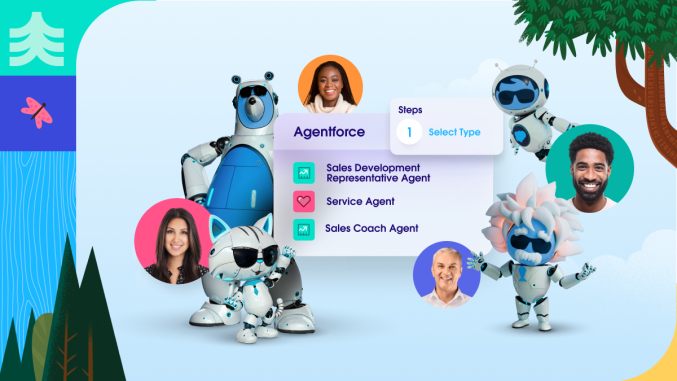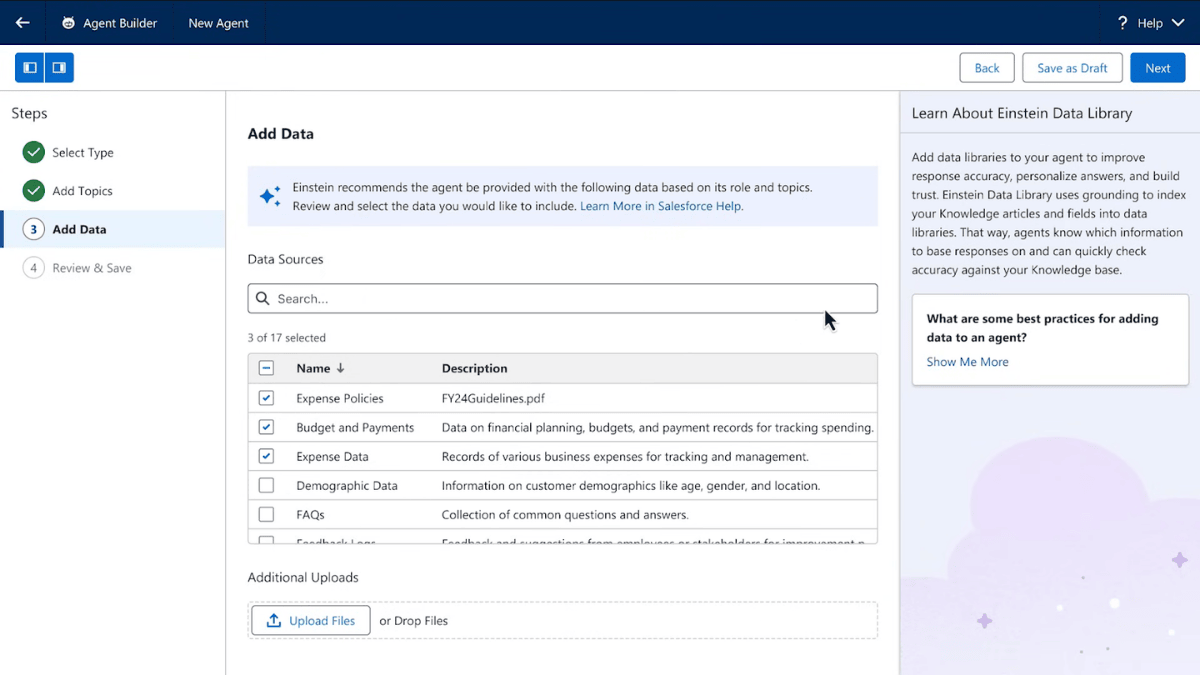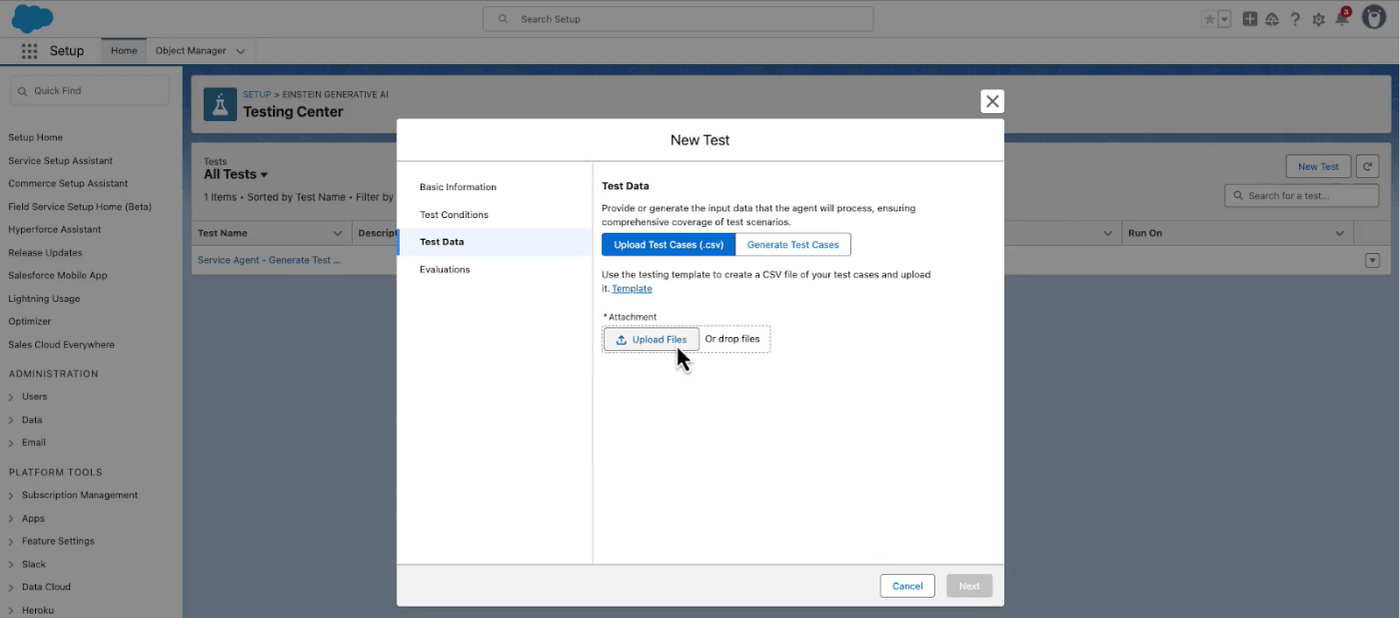Salesforce Agentforce Implementation Roadmap: Steps, Timeline, and Cost Factors
Salesforce launched Agentforce just a year ago, and it’s already being used by over 12,000 users, including leading brands like Goodyear, Wiley, and 1-800Accountant. What’s making headlines is that Salesforce itself uses Agentforce to power its own Help.Salesforce platform, which handles more than 60 million visits annually.
The best thing is, you don’t need to set up everything from scratch. If you’re already a Salesforce customer, you can easily implement Agentforce within your existing ecosystem, whether as a pilot project or a full rollout.
To help you get started, this blog will walk you through the Salesforce Agentforce implementation steps, outline the typical timeline, and highlight the key cost factors to consider. By understanding each phase and the investment involved, you’ll be well-equipped to plan an effective, on-schedule rollout.
What is Agentforce?
Agentforce is Salesforce’s AI-powered platform that brings digital agents (virtual workers) into everyday business operations. These AI agents are designed to support customer service, assist teams across sales, marketing, and internal operations, and handle routine tasks efficiently. Unlike traditional chatbots, Agentforce agents work with context; they understand your business data, learn from interactions, and take actions accordingly.
Recently, Salesforce announced Agentforce 360, putting Agentforce at the center of everything it builds. Whether it’s Service Cloud, Sales Cloud, Marketing Cloud, or industry-specific solutions for healthcare, education, and finance, all now come enhanced with AI capabilities that deliver smarter, faster, and more personalized experiences.
If you’d like to learn more, check out our detailed blog on how Agentforce works.
Salesforce Agentforce Implementation Steps
Agentforce requires thoughtful preparation to deliver its full potential. Follow these key steps to ensure a smooth implementation and a faster path to measurable results.
1. Discovery & Requirement Analysis
Every successful implementation begins with a strong foundation. To build that foundation, start by asking yourself why you’re implementing Agentforce. Identify your goals, the challenges you want to solve, and the specific use cases you aim to address.
Since Agentforce can be deployed across sales, marketing, HR, or service teams, or even function as a chat or voice assistant, understanding these needs early ensures your strategy stays focused. Whether it’s for internal productivity or customer engagement, clear objectives help shape a well-aligned and effective implementation plan.
Source: Salesforce
2. Pre-Implementation Design & Planning
Before moving into Salesforce Agentforce implementation, this stage focuses on laying the groundwork. Start by outlining a solid data strategy and identifying key stakeholders who will guide the setup. Define clear user roles and responsibilities to ensure governance and scalability once Agentforce goes live.
Next, assess your data landscape, both structured and unstructured, such as CRM records, emails, and knowledge articles. Identify which data sources will be most valuable for Agentforce to learn from. By completing these preparations early, you’ll enter the setup phase with clarity, alignment, and a strong foundation for success.
Budgeting is also an important part of this stage. If you already have it planned, that’s great. If not, stay tuned as we’ll cover Agentforce Pricing and overall costing later in this blog.
3. Get Your Agentforce License Ready
Once your planning is complete, it’s time to bring Agentforce into your Salesforce ecosystem. You can get Agentforce through one of Salesforce’s available options: Flex Credits, per-user add-on licenses, or the legacy per-conversation model. The choice depends on how your organization plans to deploy and scale digital agents.
To help you better understand, we’ve created a comprehensive blog post explaining the Agentforce pricing model.
Note: Agentforce is available only for Enterprise Edition or higher. It is not included in the Starter or Pro Suite editions.
Agentforce Pricing | Source: Salesforce
4. Setup & Configuration
This is the stage where your Salesforce Agentforce implementation truly begins to take shape. Once everything is in place, it’s time to configure key settings and activate Agentforce within your Salesforce environment. Next, you’ll create your first digital agent in Agentforce Builder and define its purpose, whether for customer support, lead management, or internal operations.
Here’s what this phase generally includes:
Enable Einstein and activate Agentforce in Setup.
Create your first agent and define its role or topic.
Customize the agent, give it a name, a natural language description, and set standard actions like querying records, summarizing cases, or drafting emails.
Assign data sources for training and context.
Test and refine to ensure optimal performance.
Adding data source in Agent Builder | Source: Salesforce
Creating agents in Agentforce is easy with prebuilt topics and actions, but the truth is, every business operates differently. To build truly personalized agents that align with your unique workflows, custom actions such as Flow actions, Apex actions, and Prompt Template actions are essential.
For a faster and more seamless rollout, we recommend partnering with an experienced Salesforce Agentforce Implementation Partner who can help you design, train, and optimize advanced agents capable of handling complex tasks with ease.
5. Continuous Monitoring & Refinement
Continuous monitoring and testing are essential to avoid Salesforce Agentforce challenges and ensure your agents perform as expected. This can be achieved in two ways: through Conversation Preview and the Agentforce Testing Center.
Use Conversation Preview to manually simulate real interactions and observe how the agent responds. This is ideal for newly created agents.
For more scalable and consistent validation, leverage the Agentforce Testing Center. Upload test cases via a CSV file to verify that agents select the correct topics, execute the right actions, and deliver the expected outcomes. This process helps identify gaps, refine instructions, and maintain high-quality performance as your business grows, ensuring your agents continue to handle complex tasks accurately and reliably.
Agentforce Testing Center | Source: Agentforce
Typical Timeline for Salesforce Agentforce Implementation
Salesforce Agentforce can be implemented surprisingly quickly, but the actual timeline depends on the complexity of the use case, data readiness, and team alignment. Even simple agents handling repetitive tasks can be built in minutes using prebuilt topics and actions.
To understand it better, let’s take the example of Salesforce’s own Help.Salesforce platform, which was launched as a pilot program for 200 users and took around four weeks to configure, train, and validate agents effectively.
Implementation Timeline for Agentforce
Quick Start (Minutes to Days): Salesforce provides low-code/no-code tools like Agent Builder and pre-built templates that allow users to create a basic, functional AI agent in as little as 30 minutes. These are ideal for simple, repetitive workflows.
Average Implementation (Weeks): For small businesses with straightforward workflows and limited data, a standard Agentforce implementation can take around four to five weeks. This generally involves defining goals, setting up the basic structure, and initial configuration.
Complex Implementations (Months): For complex setups requiring significant customization, deep data integration across various systems (using tools like MuleSoft or Data Cloud), and integration with multiple external applications, implementation can take several months.
Factors Influencing Salesforce Agentforce Implementation Time
Complexity of the use case: Simple, out-of-the-box agents deploy faster than those requiring complex logic and multi-step workflows.
Level of customization: Extensive customization using Apex code or intricate flows will increase development time.
Data readiness: Integrating and harmonizing all necessary customer data and metadata within Data Cloud is a key preparatory step that can affect the timeline.
Team alignment: Clear goals and collaboration across business, IT, and security teams help prevent delays.
Cost Factors for Salesforce Agentforce Implementation
Understanding the costs of Salesforce Agentforce implementation is essential for planning effectively and avoiding unexpected expenses. The total investment depends on several factors, including Salesforce licensing type, Agentforce usage pricing, partner fees (if you opt for an implementation partner), and, in some cases, ongoing maintenance costs.
Salesforce License Pricing
Agentforce is available exclusively for Salesforce Customer 360 platforms (rebranded as Agentforce 360) and requires Enterprise Edition or higher. The cost varies depending on the edition and the specific Salesforce solution you choose.
| Salesforce Edition | Solution | Cost (USD/User/Month) |
|---|---|---|
| Enterprise | Sales Cloud / Service Cloud | $175 |
| Higher Editions | Sales Cloud / Service Cloud | Up to $550 |
| Marketing Cloud Next Growth Edition | Marketing Cloud | $1,500 |
| Marketing Cloud Next Advanced Edition | Marketing Cloud | $3,250 |
Agentforce Pricing
Agentforce pricing is an additional cost on top of your Salesforce licenses that gives you access to the platform’s AI capabilities. Salesforce offers two main pricing models, allowing you to align expenses with your usage and business objectives.
| Pricing Model | Description | Cost |
|---|---|---|
| Flex Credits | Pay per action | 500 USD / 100k credits |
| Conversations | Pay per conversation | 2 USD / conversation |
Note: Each action in Agentforce consumes 20 Flex Credits, which converts to approximately $0.10 per action, while per-conversation usage is billed at $2 per conversation. Credits are tracked in your organization’s digital wallet, helping you monitor and control usage effectively
For detailed and up-to-date pricing, visit the Salesforce official Agentforce pricing page.
Partner Fees
Many organizations choose to work with an experienced Salesforce Agentforce implementation partner. The fees can vary significantly from one partner to another based on their expertise, your project’s scope, and the overall complexity of the implementation. Typical components include:
Consulting Fees: Strategic guidance, defining business use cases, and recommending the best approach for AI agent deployment.
Implementation Fees: Hands-on work such as configuring agents, creating custom actions (Apex, Flow, Prompt Templates), and integrating Agentforce with your existing Salesforce environment.
Maintenance & Support Fees: Ongoing support for updates, optimization, monitoring, and addressing issues as your agents scale and business processes evolve.
Cost Summary for Salesforce Agentforce Implementation
| Cost Component | Description | Typical Range / Notes |
|---|---|---|
| Salesforce License | Enterprise or higher edition of Customer 360 / Agentforce 360 | $175–$550 per user/month (Sales/Service Cloud) $1,500–$3,250 per user/month (Marketing Cloud) |
| Agentforce Usage | AI agent usage via Flex Credits or per Conversation | Flex Credits: $500 / 100k credits (~$0.10 per action) Per Conversation: $2 per conversation |
| Partner Consulting Fees | Strategic guidance, business use case planning, and implementation roadmap. | Approximately $10,000–$25,000 (one-time, varies by partner) |
| Partner Implementation Fees | Agent configuration, custom actions, integrations, and deployment. | Approximately $50,000–$150,000 (one-time, varies by project scope) |
| Maintenance & Support | Ongoing updates, optimization, monitoring, troubleshooting, etc. | Varies depending on agent complexity and business requirements |
Note: Salesforce licenses and Agentforce usage costs are relatively fixed and predictable, whereas partner fees can vary widely depending on the partner’s expertise, project scope, complexity, and customization needs.
Conclusion:
Agentforce is a great solution for businesses to achieve more in less time and with fewer resources. These AI agents not only assist customers but also support teams with everyday tasks, improving efficiency and productivity. Unlike basic chatbots, Agentforce enables intelligent, autonomous agents capable of reasoning and making decisions. However, to unlock these benefits, proper planning, data preparation, and expert guidance are essential.
When implemented correctly, Agentforce can transform how teams work, automate routine processes, and deliver smarter customer experiences. By following this Salesforce Agentforce implementation guide, businesses can ensure a smooth rollout and maximize their return on investment.
Let’s Talk
Drop a note below to move forward with the conversation 👇🏻






